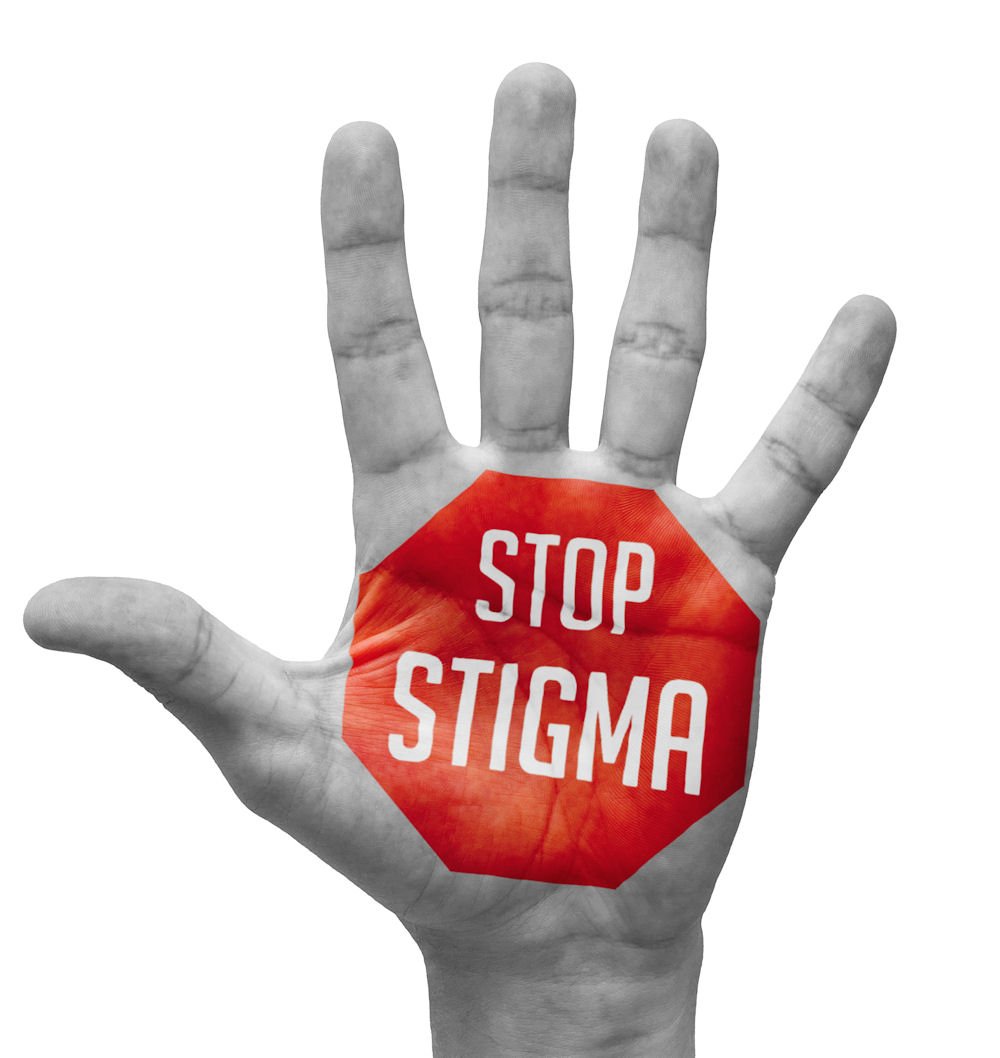
Let’s talk about breaking the stigma—because it’s long overdue, especially when it comes to mental illness and the LGBTQ+ community. Too often, the stigma around mental health makes it harder for LGBTQ+ individuals to live authentically and get the support they deserve. It shows up in all kinds of ways—everyday misunderstandings, harmful stereotypes, and even outright discrimination.
But here’s the thing: change starts with all of us. By educating ourselves, encouraging better connections between clinicians and LGBTQ+ patients, and creating safe spaces for people to share their stories, we can take steps toward a more supportive, understanding world.
Mental illness stigma is real, especially affecting LGBTQ individuals and other minority groups. At Golden Gate Recovery in Marin County, California, our men’s only rehab center are allies of the LGBTQ+ community. We specialize in addressing the needs and barriers that affect males from getting the treatment they need through our LGBTQ mental health services.
Men’s mental health stigma is a deeply rooted issue that affects countless individuals, especially LGBTQ+ men. Society still clings to outdated ideas of masculinity, expecting men to be strong, stoic, and self-reliant. These pressures make it hard for any man to admit they’re struggling, but for LGBTQ+ men, the challenges are even greater.
Alongside societal expectations, they often face homophobia, transphobia, and other forms of discrimination, which compound the difficulty of seeking help. The result? Many LGBTQ+ men suffer in silence, with mental health issues such as anxiety disorders and depressive disorders left unaddressed.
Mental illness stigma manifests in both subtle and overt ways. Dismissive comments, such as “just man up,” can undermine a person’s willingness to seek help. Additionally, LGBTQ+ men may feel isolated if healthcare providers fail to understand their unique experiences. The impacts of stigma and discrimination are far-reaching, often leaving lasting emotional and psychological scars. Some key effects include:
By understanding these impacts, we can work to create more supportive environments and break the cycle of stigma and discrimination.

It’s no secret that the relationship between a patient and clinician is key to effective care. For LGBTQ+ individuals, a lack of cultural competency or empathy from clinicians can create an uncomfortable, even harmful, experience. On the flip side, patients may feel too afraid of being judged to open up about their mental health struggles fully. Clinicians can help break down these barriers and foster a more trusting and supportive relationship by:
Take the time to deeply understand LGBTQ+ issues, including the effects of mental illness stigma, systemic discrimination, and the unique challenges faced by different identities within the community. This involves ongoing training, reading current research, and seeking input from LGBTQ+ voices.
A welcoming practice goes beyond appearances. Ensure your space feels safe through visible signs of inclusion, like LGBTQ+ affirming materials, but also through policies that make it clear you prioritize respect and equity for all patients.
Encourage patients to share their stories by being genuinely curious and open. Avoid assumptions and show empathy by actively listening to what they are comfortable disclosing.
Words matter. Using the correct pronouns, affirming terms, and respectful language demonstrates care and validates a patient’s identity. Consistently practicing inclusive communication builds trust and shows that their experiences are valued.

Depression among LGBTQ+ youth is a growing concern. Studies consistently show that LGBTQ+ young people experience higher rates of depression, anxiety, and suicidal ideation than their heterosexual and cisgender peers. Mental illness stigma, combined with societal rejection, puts this group at significant risk. Here are the contributing factors:
LGBTQ+ youth often face harassment in school and even rejection from their families. This rejection can take an emotional toll, leaving young people feeling isolated and unsupported.
Feeling unseen in the media or society can contribute to a sense of invisibility. When LGBTQ+ youth don’t see their identities positively reflected, it reinforces feelings of otherness and loneliness.
Many LGBTQ+ youth live in areas where mental health services are either unavailable or fail to affirm their identities. Even when care is accessible, it’s often not culturally competent, further discouraging youth from seeking help.
Support must begin at home, extend into schools, and thrive within communities. Creating inclusive environments, providing access to LGBTQ+-affirming therapy, and fostering opportunities for self-expression can transform the mental health landscape for these young individuals and give them the support they deserve.

While discrimination and stigma are closely connected, they represent distinct challenges that require different approaches to address effectively. Stigma is rooted in negative societal attitudes, such as stereotypes about LGBTQ+ individuals or shaming those with mental health issues. These beliefs often paint people as “less than” or incapable, perpetuating harmful narratives. Discrimination, on the other hand, goes beyond attitudes and involves concrete actions or policies that treat individuals unfairly based on these biases.
For example, stigma might involve the widespread assumption that LGBTQ+ individuals cannot build healthy, lasting relationships. Discrimination occurs when such attitudes translate into actions, such as denying LGBTQ+ couples the legal right to marry or preventing them from adopting children. While stigma creates the foundation of harmful perceptions, discrimination enforces these beliefs through societal systems and policies.
Addressing both requires a dual approach. Shifting societal attitudes through education, media representation, and advocacy can help dismantle stigma. At the same time, enforcing inclusive laws and policies is critical to protecting individuals from discrimination and ensuring equity. Together, these efforts can foster a world where LGBTQ+ individuals and those with mental health struggles feel valued, respected, and empowered to thrive.

The most empowering thing clinicians can do is let LGBTQ+ patients lead the conversation about their mental health. Each person’s experience is deeply personal, shaped by their unique challenges, strengths, and history. By acknowledging this, clinicians can foster trust and create a more meaningful therapeutic relationship.
Clinicians can achieve this by adopting a strength-based approach. Instead of focusing solely on the struggles a patient has faced, emphasize their resilience, coping strategies, and the progress they have made. This not only builds confidence but also empowers patients to see themselves as capable of overcoming difficulties. For example, a clinician might say, "You’ve faced some incredibly tough situations, yet you’ve found ways to keep going—let’s explore how you’ve done that."
Open-ended questions are another vital tool. These encourage patients to share their stories in their own words, providing insights into their needs and priorities. Questions like, "Can you tell me more about how this has affected your daily life?" or "What feels most important for us to focus on today?" show a willingness to listen without assumptions.
Respecting boundaries is equally essential. Some topics may feel too raw or personal for a patient to discuss immediately. Clinicians should be attuned to verbal and nonverbal cues, ensuring patients feel safe and supported rather than pressured. For instance, if a patient hesitates to discuss family dynamics, a clinician could say, "We can come back to this whenever you feel ready."
In practice, trusting patients to guide the conversation about their lives creates an environment where they feel seen, heard, and valued. This patient-led approach enhances the therapeutic alliance and encourages long-term engagement with mental health care, paving the way for meaningful progress and healing.
Being an ally to LGBTQ+ patients goes beyond good intentions—it’s about taking meaningful action to create an inclusive healthcare environment. Clinicians can improve the experience for LGBTQ+ individuals by actively supporting their well-being and fostering trust.
Actionable Steps:
By taking these steps, clinicians can foster a supportive and inclusive healthcare environment for LGBTQ+ patients.

At Golden Gate Recovery, we proudly stand as a trusted ally to the LGBTQ+ community. We are dedicated to providing compassionate, affirming care that acknowledges the impact of mental illness stigma.
Our trained team ensures every patient feels respected and supported, creating personalized treatment plans for each individual’s unique journey. Through partnerships with local LGBTQ+ organizations, we connect patients to vital resources and support systems.We are committed to breaking down barriers, challenging stigma, and fostering a safe space where LGBTQ+ individuals feel valued. Contact us today.
Get confidential help! Call Us Now for:

Dr. Small’s professional experience encompasses General Psychiatry, Addiction Psychiatry and Family Medicine. As the founder of Headlands Addiction Treatment Services, Dr. Small and his team have become leaders in the delivery of addiction medicine and psychiatry to treatment programs throughout California and beyond. These compassionate services are reliable, responsive, personable, and evidenced based. Most of the team providers carry multiple board certifications in psychiatry, addiction medicine and family medicine. They recruit the best and brightest addiction medicine professionals to deliver the highest level of treatment.
Certified by the Department of Health Care Services Certification: #210052AP Expiration: 03/31/2025
Copyright © 2025 Golden Gate Recovery | Privacy Policy | Accessibility